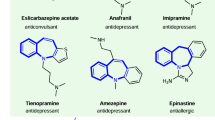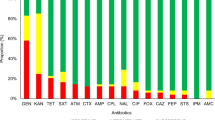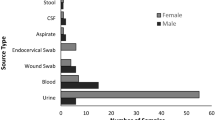Abstract
A protocol for preparative isopenicillin N (IPN) purification, a highly interesting and hitherto unavailable intermediate of the penicillin and cephalosporin biosynthetic pathway due to its high unstability, is described. Culture broths of Acremonium chrysogenum TD189, a strain blocked in cephalosporin biosynthesis that accumulates this metabolite, were treated with acetone and filtered though charcoal and a hydrophobic resin in a single step as tandem columns. The cleared broth was then lyophilized and passed though a Sephadex G-25 column. The last step was the purification to homogeneity of IPN in a semipreparative HPLC equipment and, optionally, a desalting step by Sephadex G-10 column. Once purified, a complete analysis of the stability of the compound and the conditions for its long-term storage was carried out. Our results suggest a first-order model for IPN decomposition for all the pH and temperature analyzed. IPN is more stable at neutral pH, and once lyophilized, can be stored under vacuum and −75 °C with a half-life of 770 days.
Similar content being viewed by others
Log in or create a free account to read this content
Gain free access to this article, as well as selected content from this journal and more on nature.com
or
References
Kresse, H., Belsey, M. J. & Rovini, H. The antibacterial drugs market. Nat. Rev. Drug Discov. 6, 19–20 (2007).
Teijeira, F. et al. The transporter CefM involved in translocation of biosynthetic intermediates is essential for cephalosporin production. Biochem. J. 418, 113–124 (2009).
Jami, M. S., Barreiro, C., García-Estrada, C. & Martín, J. F. Proteome analysis of the penicillin producer Penicillium chrysogenum: characterization of protein changes during the industrial strain improvement. Mol. Cell Proteomics. 9, 1182–1198 (2010).
Vanderhaeghe, H., Vlietinck, A., Claesen, M. & Parmentier, G. Preparation of penicillin N and isopenicillin N. J. Antibiot. 27, 169–177 (1974).
Usher, J. J., Loder, B. & Abraham, E. P. Synthesis of tritium-labelled isopenicillin N, penicillin N and 6-aminopenicillanic acid. Biochem. J. 151, 729–739 (1975).
Huffman, G. H. Improved preparation of penicillin N and isopenicillin N. Org. Prep. Proced. Int. 20, 497–503 (1988).
Madeira-Lau, R. et al. Synthesis of penicillin N and isopenicillin N. Tetrahedron. 56, 7601–7606 (2000).
Neuss, N. et al. High performance liquid chromatography (HPLC) of natural products V. The use of HPLC in the cell-free biosynthetic conversion of alpha-aminoadipyl-cysteinyl-valine (LLD) into isopenicillin N. J. Antibiot. 35, 580–584 (1982).
Miller, R. D. et al. High performance liquid chromatography (HPLC) of natural products. IV. The use of HPLC in biosynthetic studies of cephalosporin C in the cell-free system. J. Antibiot. 34, 984–993 (1981).
García-Estrada, C., Vaca, I., Lamas-Maceiras, M. & Martín, J. F. In vivo transport of the intermediates of the penicillin biosynthetic pathway in tailored strains of Penicillium chrysogenum. Appl. Microbiol. Biotechnol. 76, 169–182 (2007).
Kheirolomoom, A., Kazemi-Vaysari, A., Ardjmand, M. & Baradar-Khoshfetrat, A. The combined effects of pH and temperature on penicillin G decomposition and its stability modeling. Process Biochem. 35, 205–211 (1999).
Lu, X., Xing, H., Su, B. & Ren, Q. Effect of buffer solution and temperature on the stability of penicillin G. J. Chem. Eng. Data. 53, 543–547 (2008).
Mukherjee, B. B. & Lee, B. K. in Antibiotics, isolation, separation and purification (eds Weinstein, M.J., Wagman, G.H.) Journal of Chromatography Library 387–414. Vol. 15. (Elsevier Scientific Publishing Company, Amsterdam, 1978).
Ullán, R. V. et al. RNA-silencing in Penicillium chrysogenum and Acremonium chrysogenum: validation studies using β-lactam genes expression. J. Microbiol. Meth. 75, 209–218 (2008).
Ullán, R. V. et al. A novel epimerization system in fungal secondary metabolism involved in the conversion of isopenicillin N into penicillin N in Acremonium chrysogenum. J. Biol. Chem. 277, 46216–46225 (2002).
Cantoral, J. M. et al. Biochemical characterization and molecular genetics of nine mutants of Penicillium chrysogenum impaired in penicillin biosynthesis. J. Biol. Chem. 268, 737–744 (1993).
Fernández, F. J. et al. Molecular characterization of three loss-of-function mutations in the isopenicillin N-acyltransferase gene (penDE) of Penicillium chrysogenum. J. Bacteriol. 176, 4941–4948 (1994).
Jensen, S. E., Westlake, D. W. & Wolfe, S. Cyclization of delta-(L-alpha-aminoadipyl)-L-cysteinyl-D-valine to penicillins by cell-free extracts of Streptomyces clavuligerus. J. Antibiot. 35, 483–490 (1982).
López-Nieto, M. J., Ramos, F. R., Luengo, J. M. & Martín, J. F. Characterization of the biosynthesis in vivo of alpha-aminoadipyl-cysteinyl-valine in Penicillium chrysogenum. Appl. Microbiol. Biotechnol. 22, 343–351 (1985).
Luengo, J. M. et al. Direct enzymatic synthesis of penicillin G using cyclases of P. chrysogenum and A. chrysogenum. Bio/Technol. 4, 44–47 (1986).
Zanca, D. N. & Martn, J. F. Carbon catabolite regulation of the conversion of penicillin N into cephalosporin C. J. Antibiot. 36, 700–708 (1983).
Le Page, G. A. & Campbell, E. Preparation of streptomycin. J. Biol. Chem. 162, 163–171 (1946).
Shen, Y. Q., Heim, J., Solomon, N. A., Wolfe, S. & Demain, A. L. Repression of β-lactam production in Cephalosporium acremonium by nitrogen sources. J. Antibiot. 37, 503–511 (1984).
Acknowledgements
This work was supported by a grant from the European Union (Eurofungbase, LSSGCT2005018964) to JFM. I Vaca thanks for a fellowship of the Diputación de León (Spain) and the support of PBCT program of CONICYT (Chile), project PDA13. R Chávez thanks to DICYT-USACH for support. We thank C García-Estrada for scientific support and B Martín and J Merino for excellent technical assistance.
Author information
Authors and Affiliations
Corresponding author
Additional information
Supplementary Information accompanies the paper on The Journal of Antibiotics website
Supplementary information
Rights and permissions
About this article
Cite this article
Vaca, I., Casqueiro, J., Ullán, R. et al. A preparative method for the purification of isopenicillin N from genetically blocked Acremonium chrysogenum strain TD189: studies on the degradation kinetics and storage conditions. J Antibiot 64, 447–451 (2011). https://doi.org/10.1038/ja.2011.30
Received:
Revised:
Accepted:
Published:
Issue date:
DOI: https://doi.org/10.1038/ja.2011.30
Keywords
This article is cited by
-
Precursor-directed combinatorial biosynthesis of cephalosporin analogue by endolithic actinobacterium Streptomyces sp. AL51 by utilizing thiophene derivative
3 Biotech (2018)
-
Structure elucidation and in silico docking studies of a novel furopyrimidine antibiotics synthesized by endolithic bacterium Actinomadura sp. AL2
World Journal of Microbiology and Biotechnology (2017)



